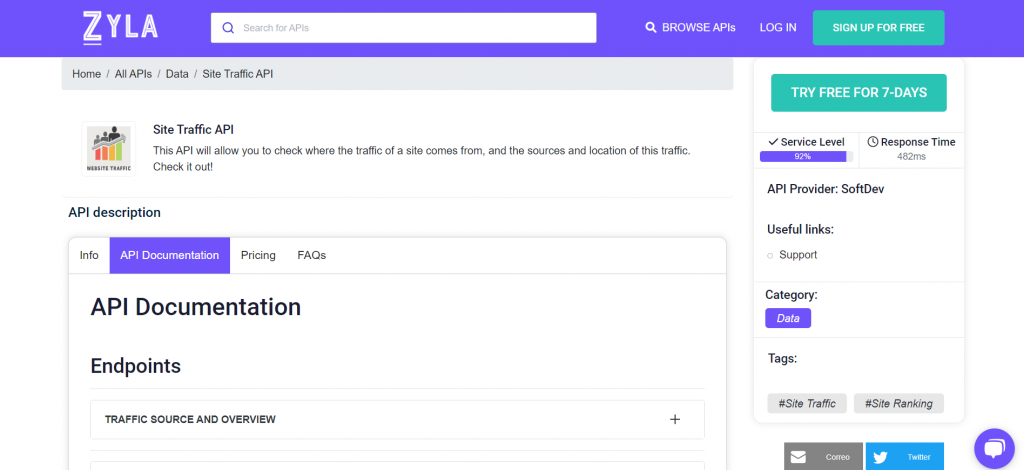Would you like to know how many visits your website receives per month? Well, there is an API that you can integrate into any website, and that will allow you to get the information you are looking for. If you are interested, just read this post.
Website traffic provides insights into the performance of your website. By tracking traffic, you can see how many people are visiting your site, how long they’re staying, which pages they’re visiting, and how they’re interacting with your content. This information can help you optimize your site and improve its performance.
Website traffic is an important factor in search engine optimization (SEO). The more traffic your site gets, the more likely it is to rank well in search engine results pages (SERPs). By tracking traffic and identifying which keywords are driving the most traffic, you can optimize your site’s content and improve its ranking in search results. In this way, you will be able to attract more people to your website and increase sales in your business.
However, not all websites can see the monthly visits. Therefore, many developers must incorporate APIs which will allow them to obtain this information. One of these APIs is the Site Traffic API, considered one of the best in this field. Also, it is the most used API.
Use Site Traffic API To Know Website Monthly Visits
The Site Traffic API allows developers to gather data on website traffic by providing a simple API endpoint. Developers can make requests to the API endpoint to retrieve data on website traffic, including the number of monthly visitors, page views, and unique visitors. The API also provides information on the average time visitors spend on the site, the bounce rate, and the exit rate.
One of the benefits of the Site Traffic API is that it provides developers with real-time data on website traffic. This means that developers can gather data on website traffic as it happens, rather than waiting for reports to be generated. This real-time data can be used to make informed decisions about website optimization and marketing strategies. Also, it can also be used to gather data on competitor websites. By using the API to gather data on competitor websites, developers can gain insights into the strategies used by their competitors to attract visitors.
Another benefit of the Site Traffic API is that it is easy to integrate with existing applications. The API provides a simple and flexible interface that can be integrated into a wide range of applications. This means that developers can use the API to enhance the functionality of their existing applications without having to rewrite large sections of code. They can make requests to the API endpoint using various programming languages, including Python, Ruby, and PHP.
Let’s see an example of an API response from this API:
cURL:
curl --location --request GET https://zylalabs.com/api/29/site+traffic+api/93/traffic+source+and+overview --header 'Authorization: Bearer YOUR_ACCESS_KEY'{
"engagement": {
"avgVisitDuration": 419,
"bounceRate": 0.3561,
"pagesPerVisit": 8.84,
"totalVisits": 2421700000
},
"monthlyVisitsEstimate": {
"2021-12-01": 2893000000,
"2022-01-01": 2652000000,
"2022-02-01": 2200000000,
"2022-03-01": 2361000000,
"2022-04-01": 2300000000,
"2022-05-01": 2421000000
},
"name": "amazon.com",
"trafficShareByCountry": [
{
"United States": 0.8126
},
{
"Canada": 0.0129
},
{
"India": 0.0129
},
{
"United Kingdom": 0.011
},
{
"China": 0.0089
}
],
"trafficSources": {
"Direct": 0.5963,
"Mail": 0.0265,
"Paid Referrals": 0.0028,
"Referrals": 0.0641,
"Search": 0.2635,
"Social": 0.0465
}
}Overall, the Site Traffic API is a powerful tool for developers that need to gather data on website traffic. The API provides real-time data on website traffic, is easy to integrate with existing applications, and is scalable enough to handle large volumes of data.



